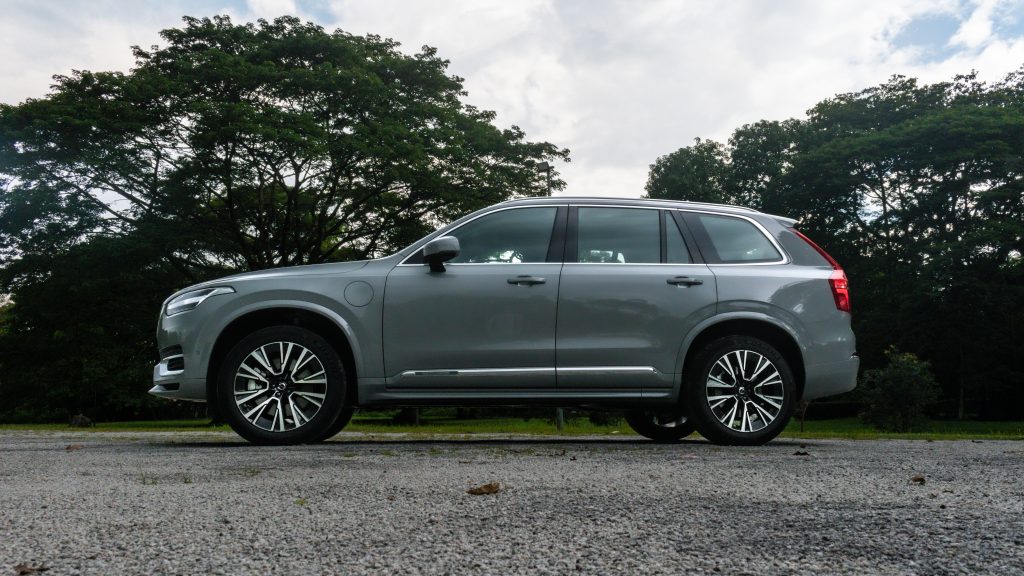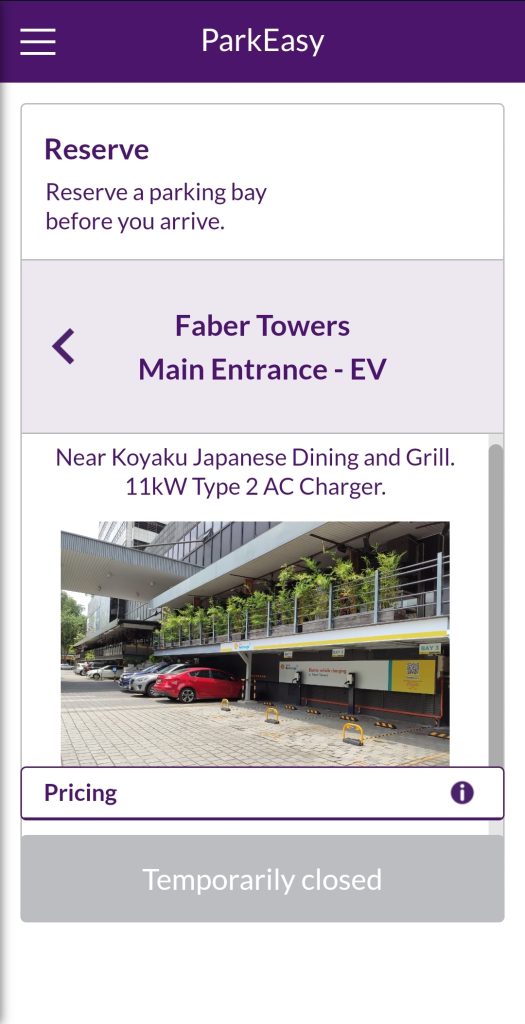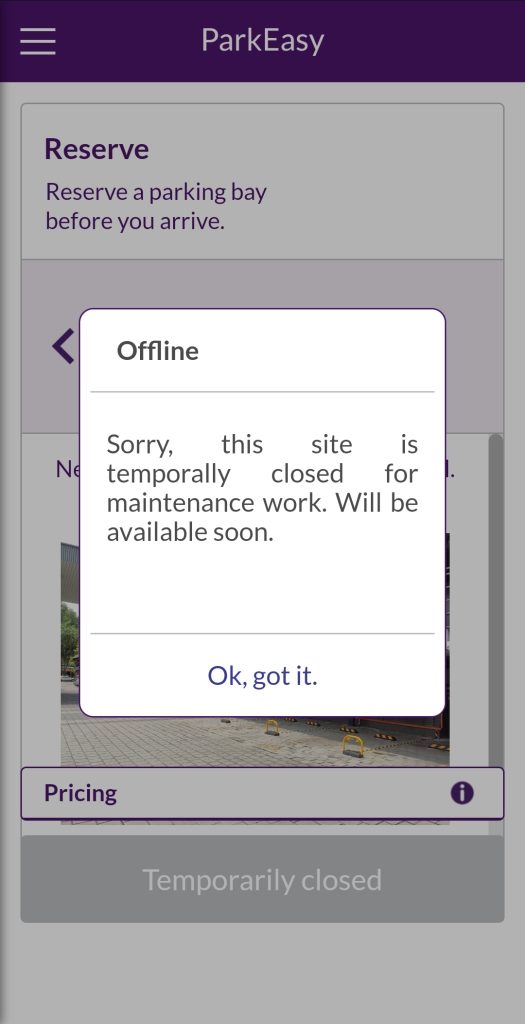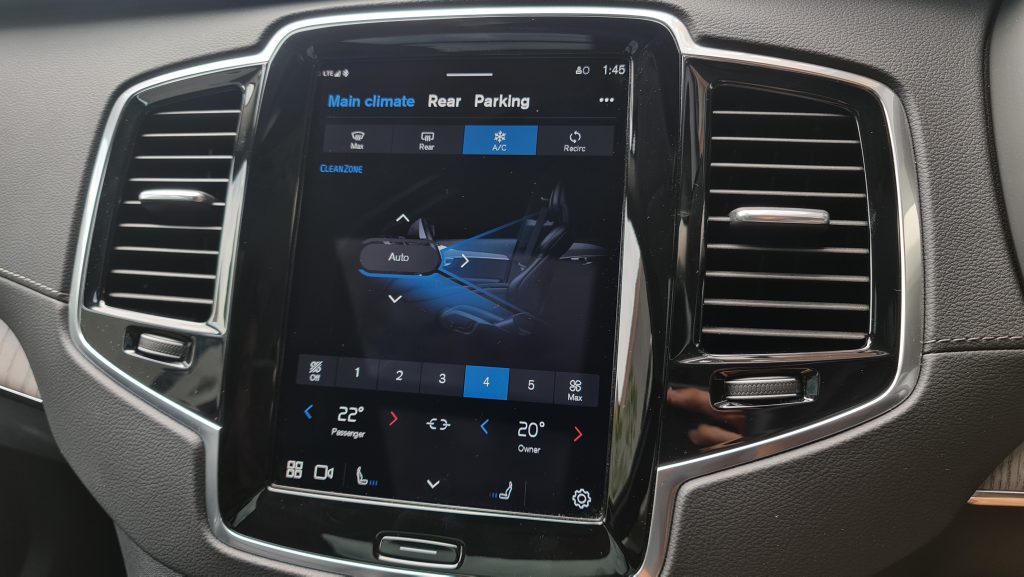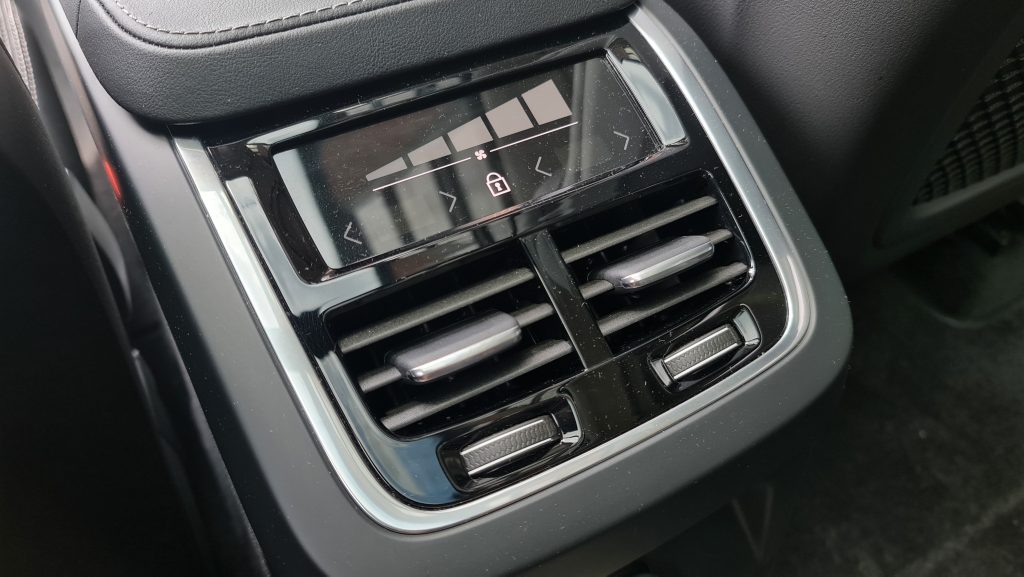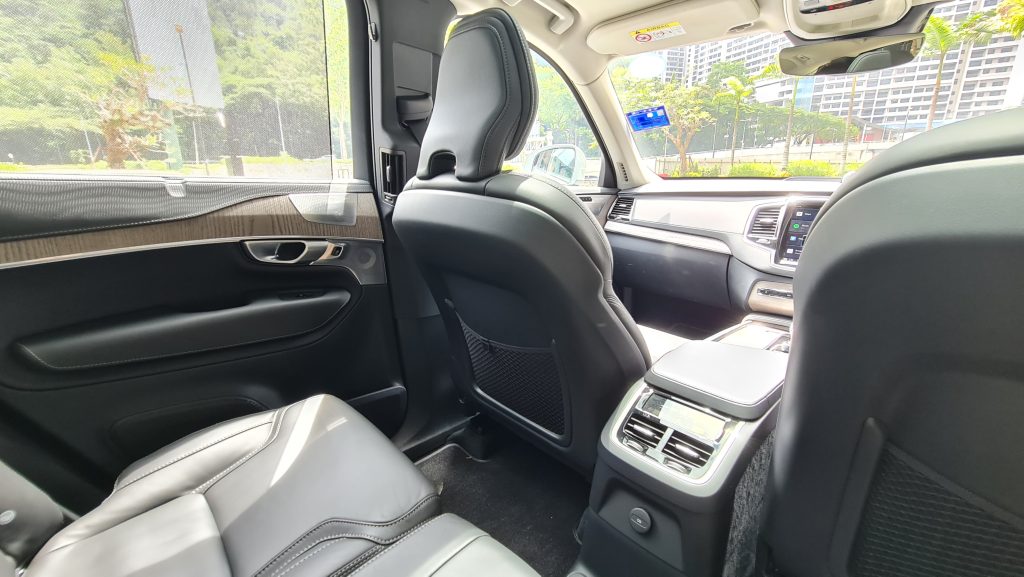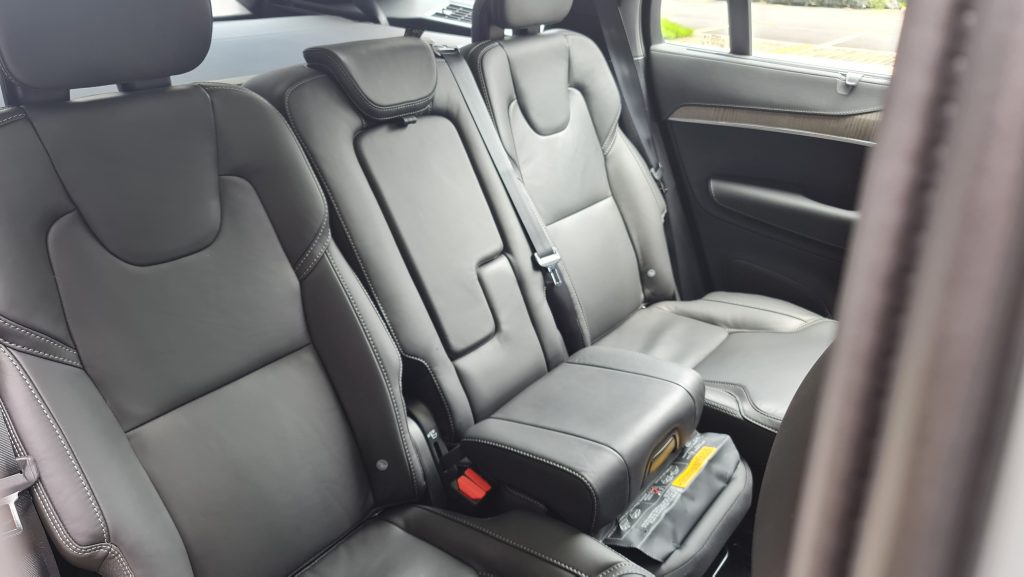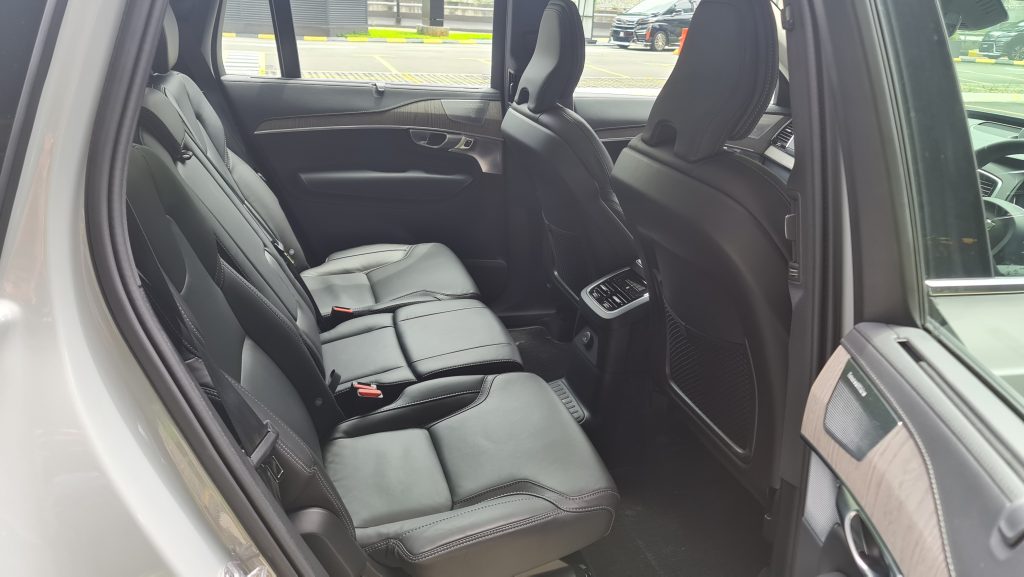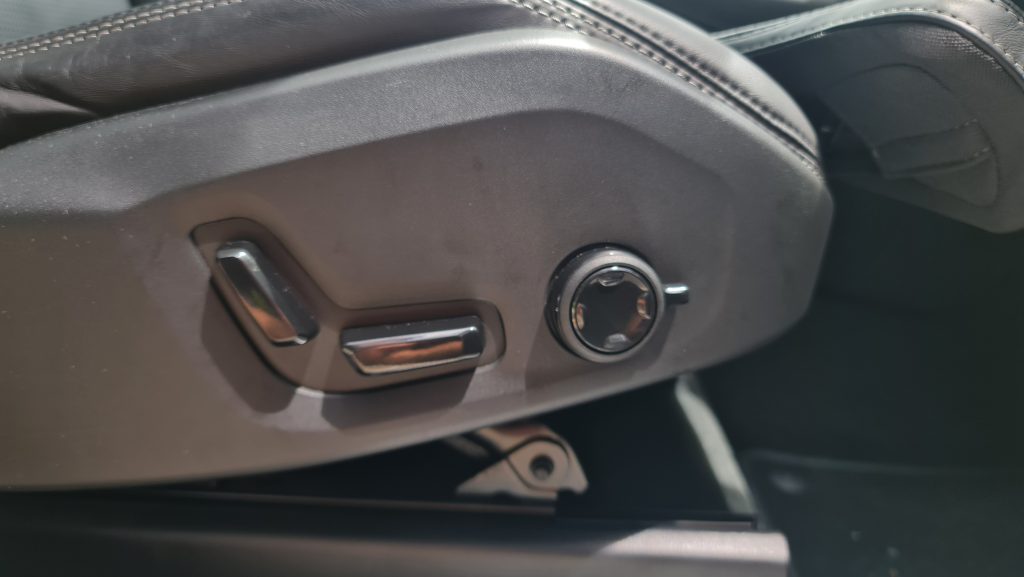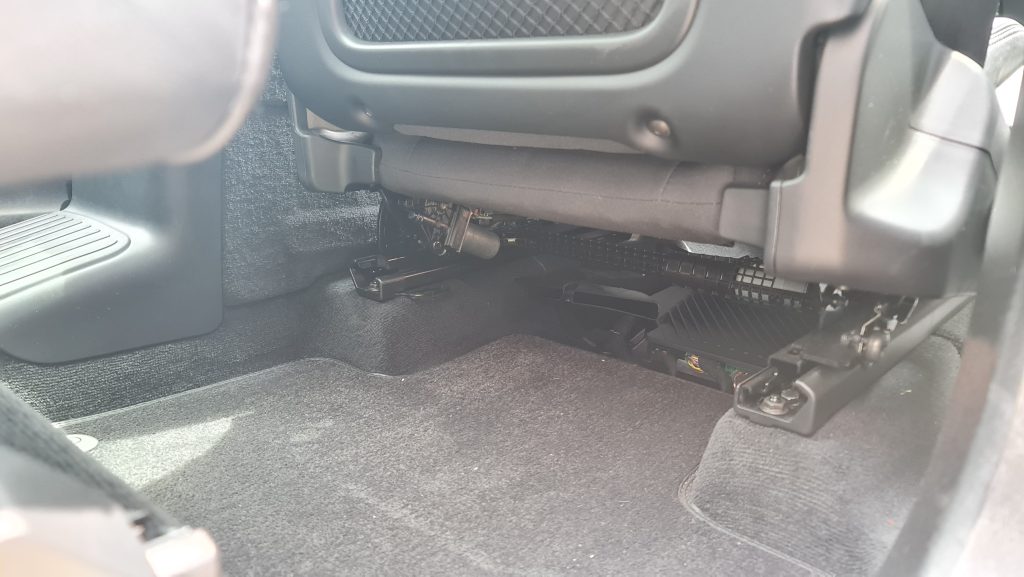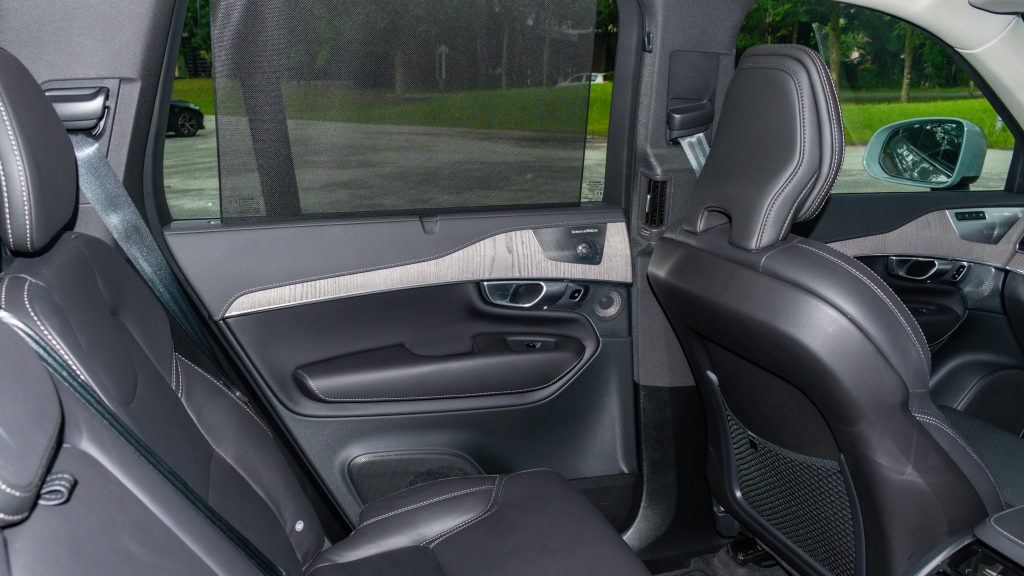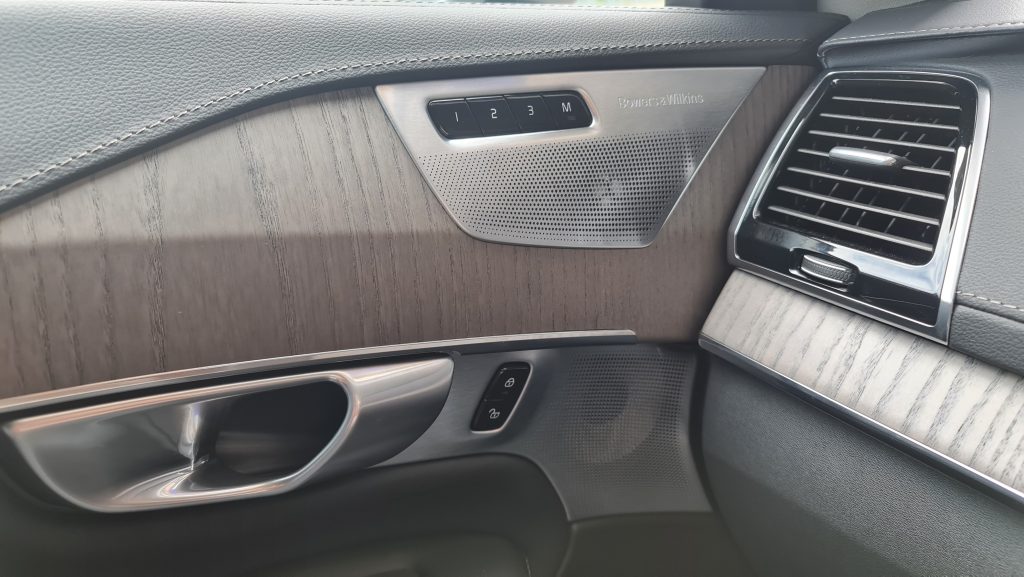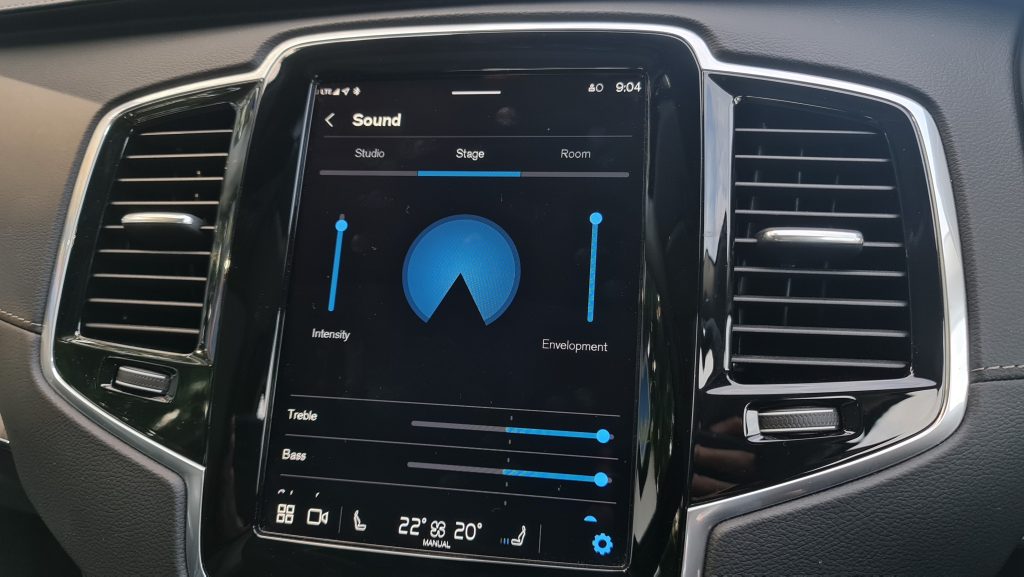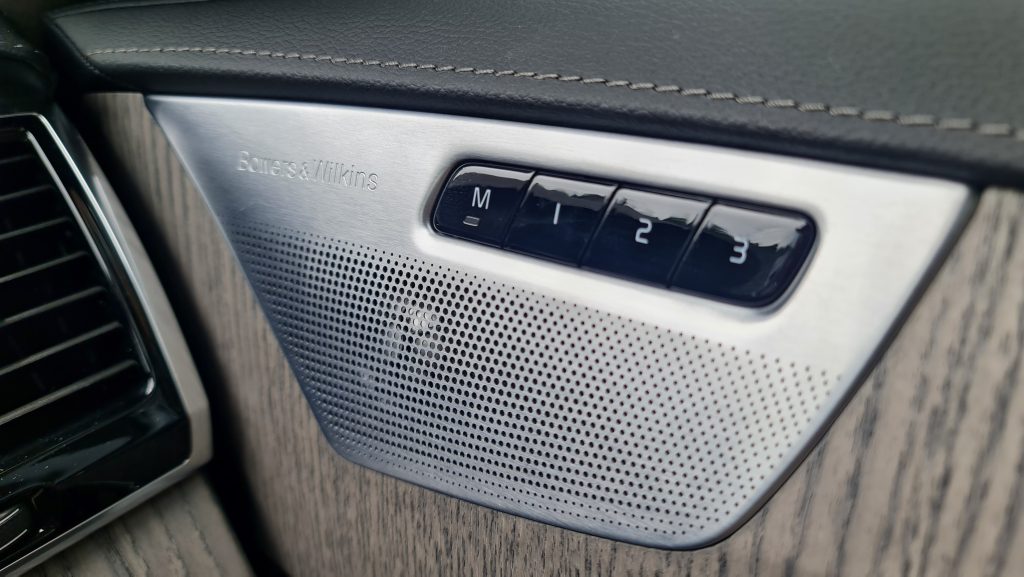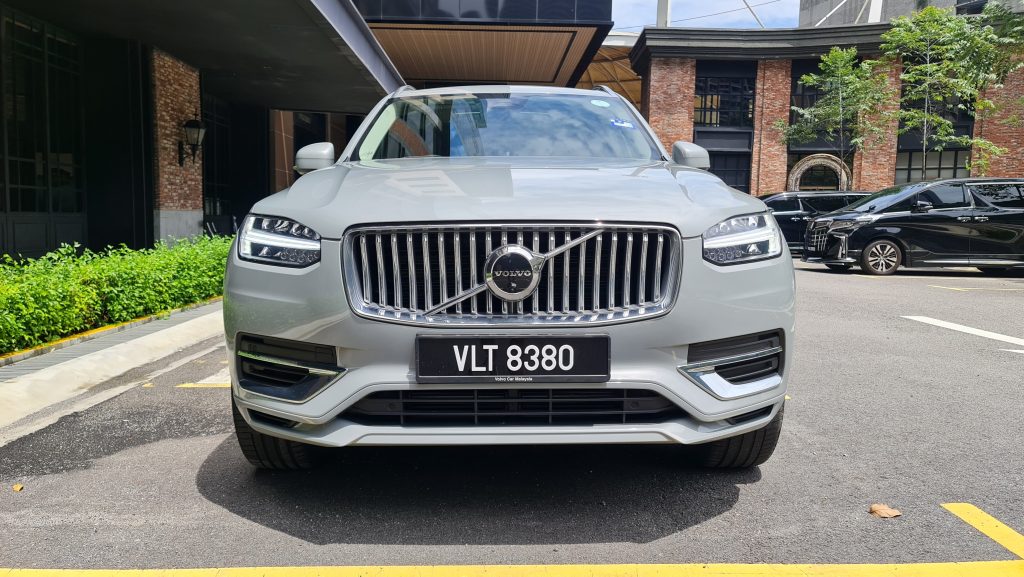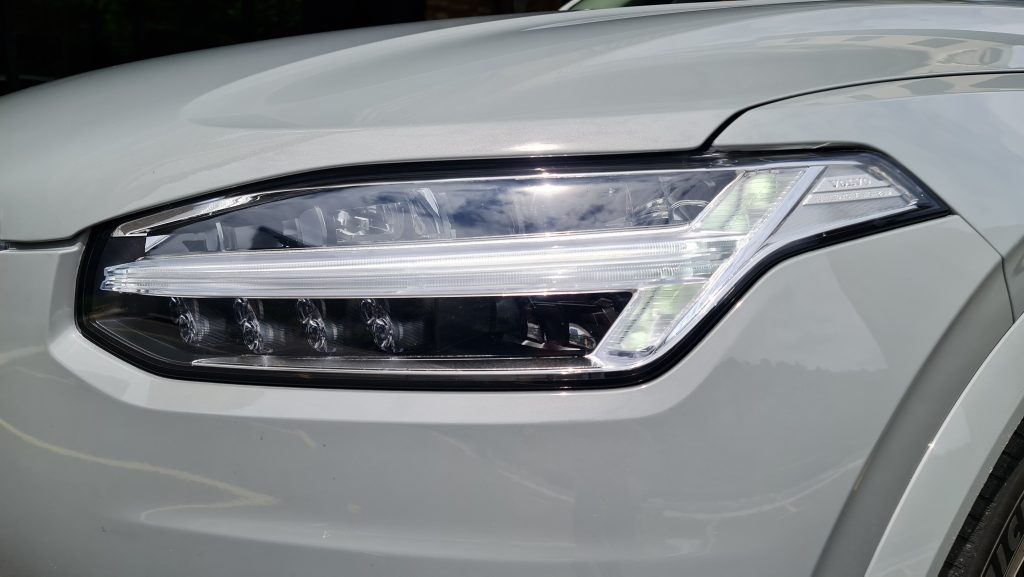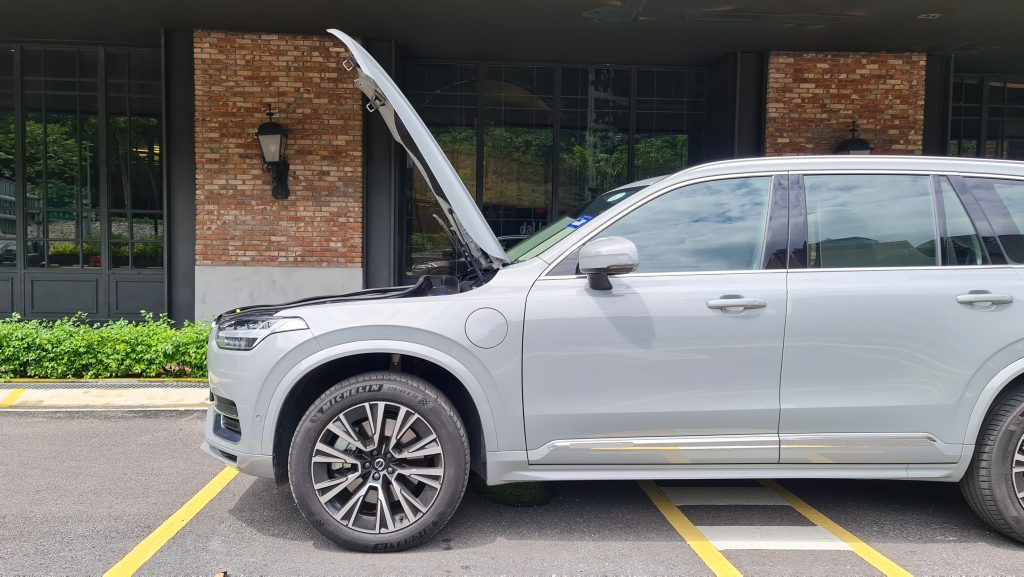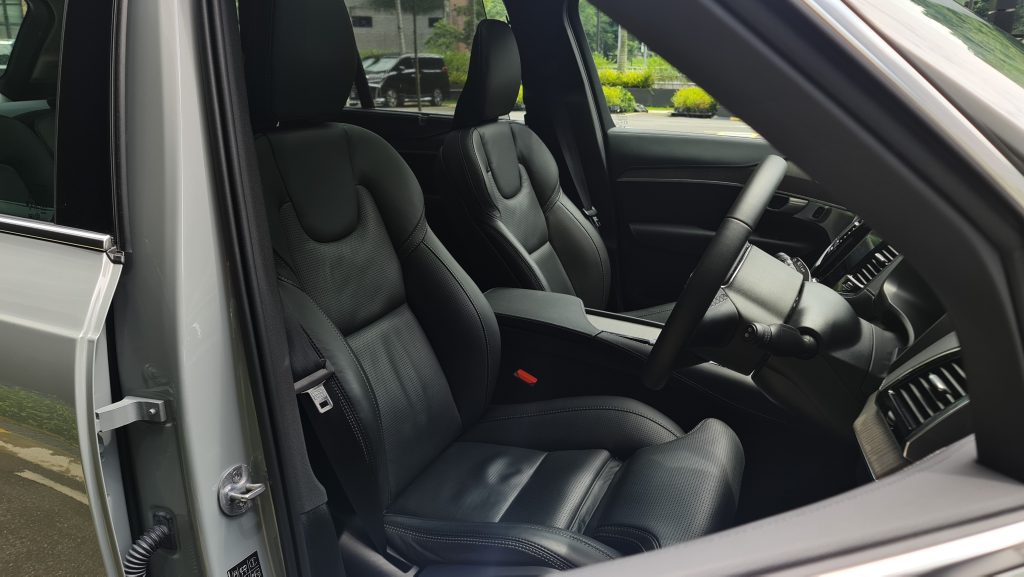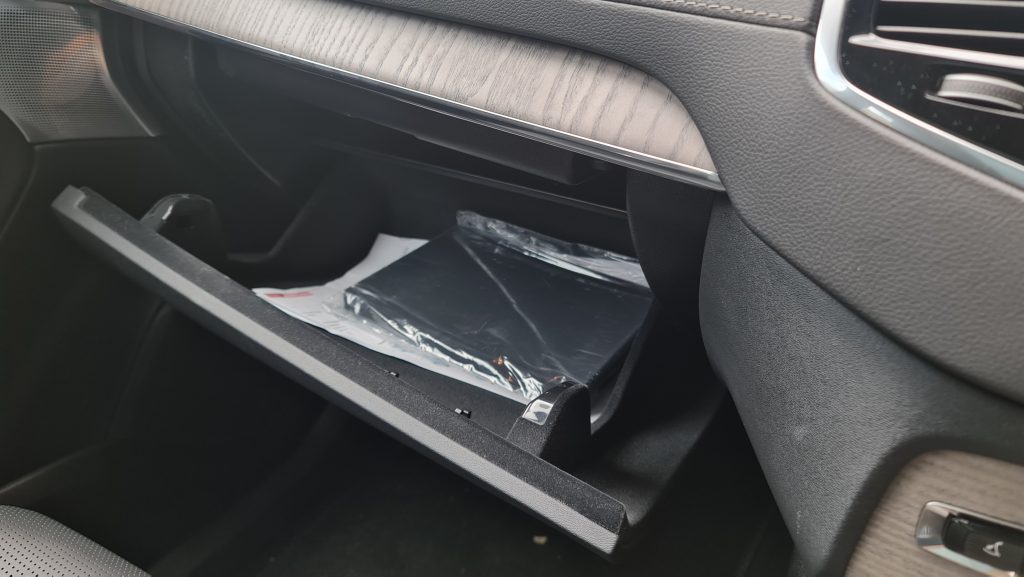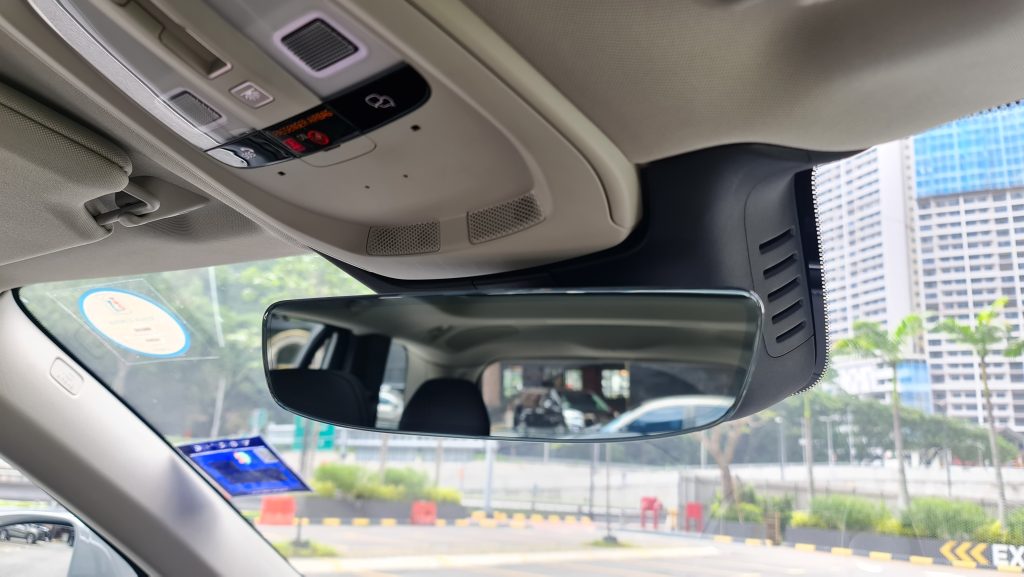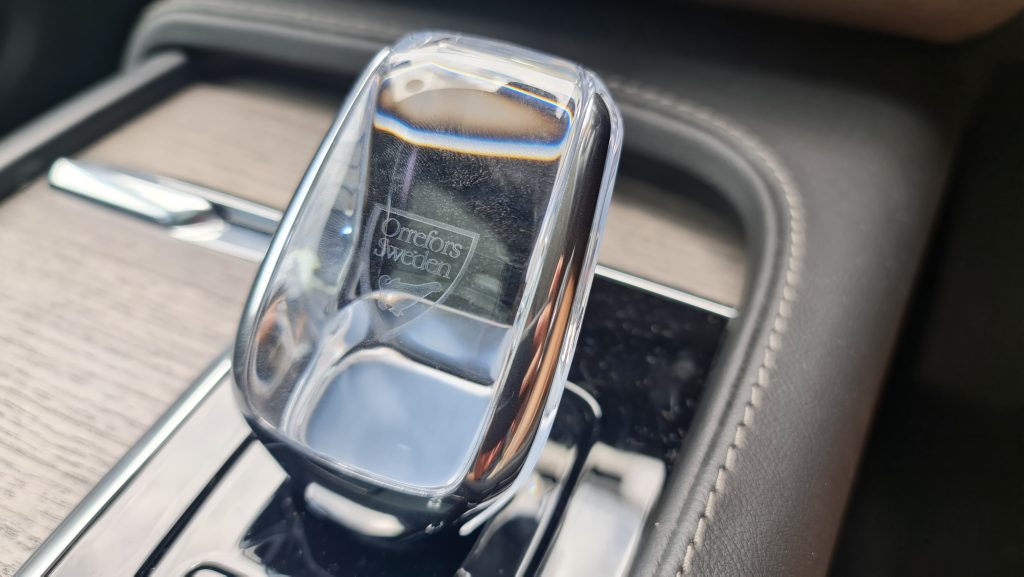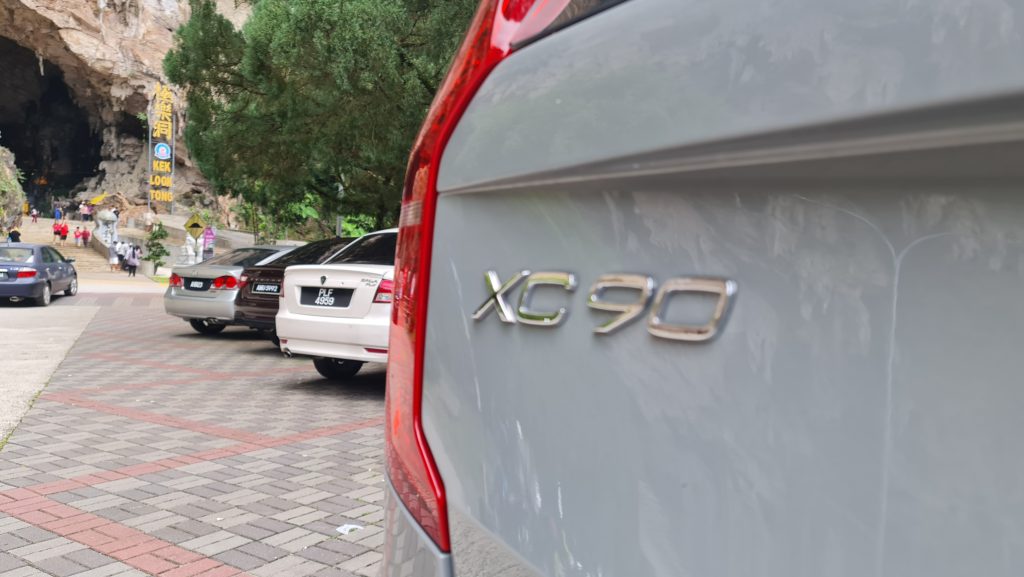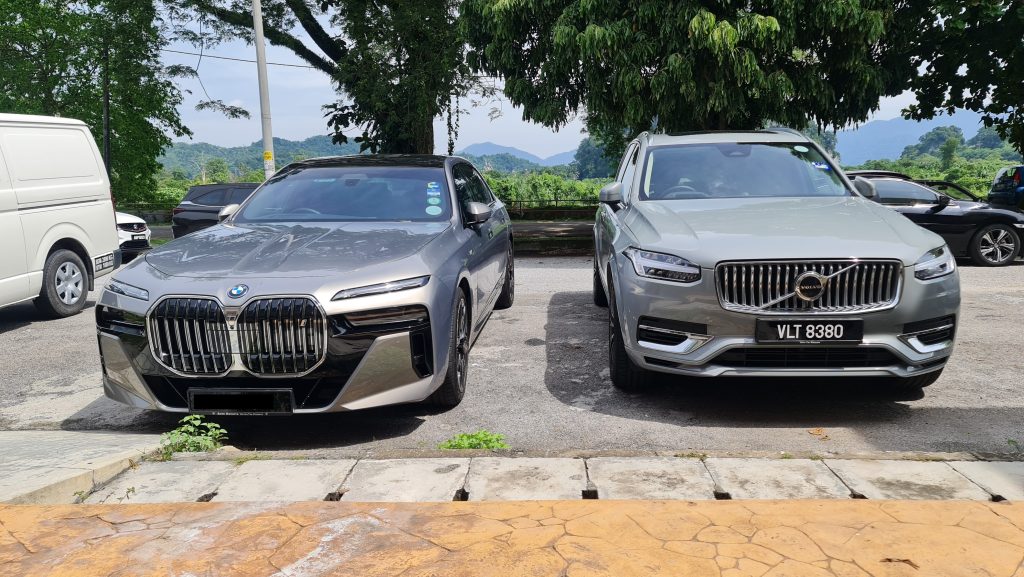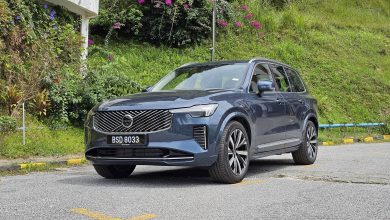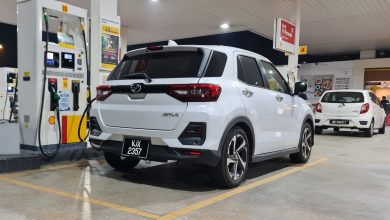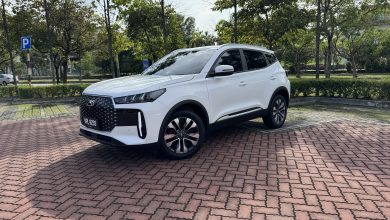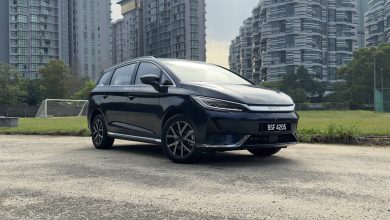
A day trip to Ipoh was sufficient to sing the praises of both the PHEV and Volvo XC90 life.
EVangelicals these days have been increasingly preaching about the possibility of practically partaking in road trips with their fully-electric cars. And with more and more charging stations popping up nationwide these days as well, EV ownership may actually be something that more and more Malaysians can consider as an everyday practical personal mobility solution.
That said, a recent road trip to Ipoh with the Volvo XC90 T8 Recharge Ultimate has highlighted that perhaps a PHEV is still a better overall choice for those who wish to embrace a more eco-conscious life, without actually suffering for it.
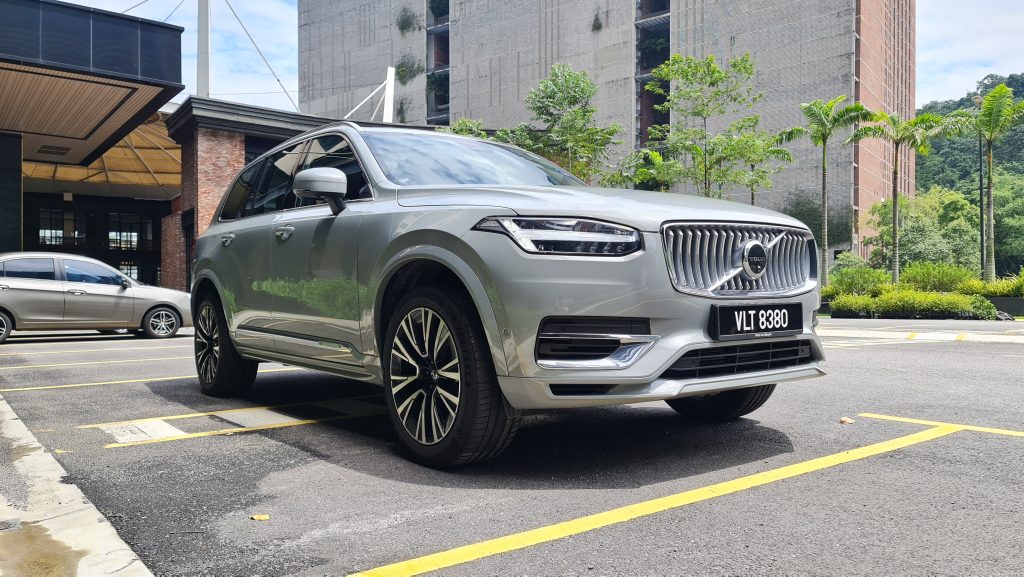
Before The Road Trip
And this sentiment of not suffering was actually established even before the Ipoh trip kicked off, as the initial plan of topping up the Volvo’s batteries at a public EV charger (condo-dwelling problems) over dinner was spoiled somewhat by the chargers being out of service (the AC chargers at Faber Heights in Taman Desa on the June 1st, for those interested)
Now if this were to be a pure EV, the nagging thought of needing to find another charging spot to top up the then nearly flat battery (depleted from a prior trip to the airport earlier) would have disrupted what turned out to be quite the pleasant evening. This will undoubtably have been further compounded by the annoyance over needing to waste yet more time out charging it after the meal, which would in turn eat into the time available for sleep, in preparation for the journey ahead early next morning.
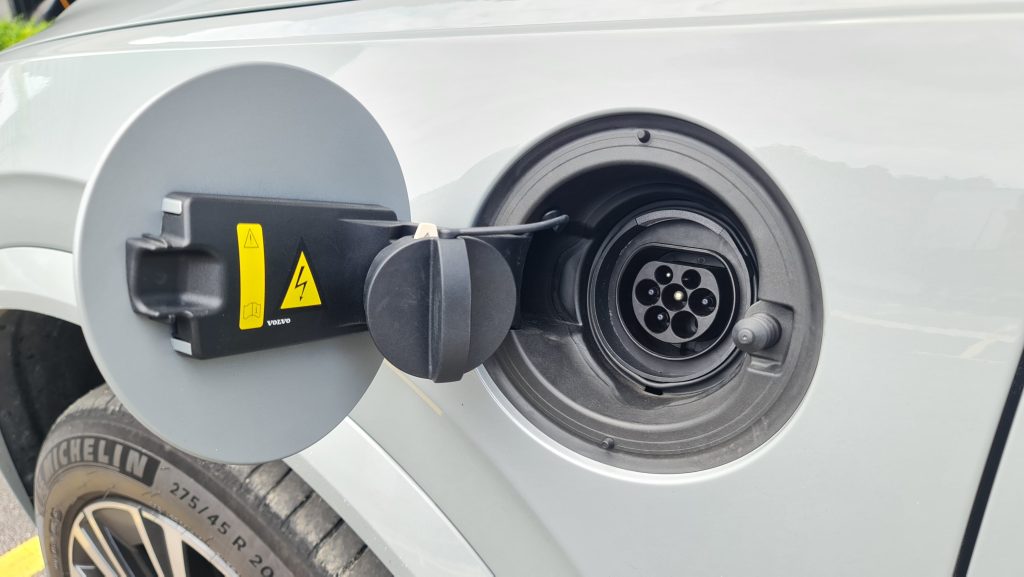
But since this Volvo XC90 was a PHEV, all that was needed to be done after dinner was… absolutely nothing! Such is because while the battery may have been nearly depleted from a round trip to KLIA, the car still had nearly all of its 70 litres of petrol on-board, with the trip computer estimating for this to translate to potential travel distance of 600 km. More than enough then to make it to Ipoh and back.
What more too is that just before setting off on the interstate journey north the next morning, the XC90 was set to operate on Charge mode. This is so that the engine that is running during the drive up (which is likely to be operating at its most efficient on a steady cruise) can also be charging up the batteries in the meantime, for some eventual zero-emissions EV driving while in Ipoh town itself.
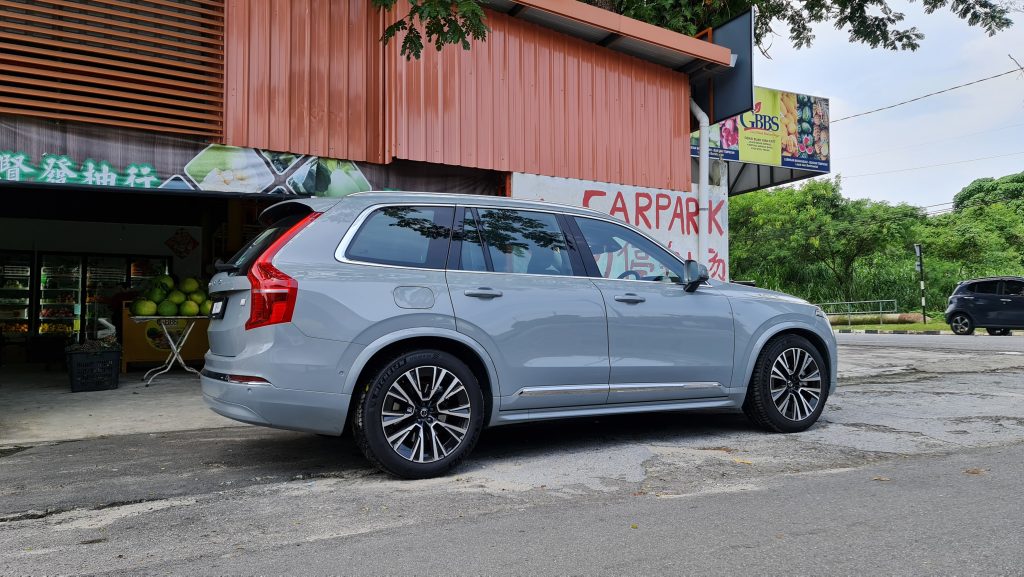
En Route To Ipoh
Now in deviating a bit from the PHEV storyline to review the car for a bit here, it really should come as no surprise for this luxobarge of a Volvo XC90 was to be a simply masterful at the task of cruising on the interstate up to Ipoh.
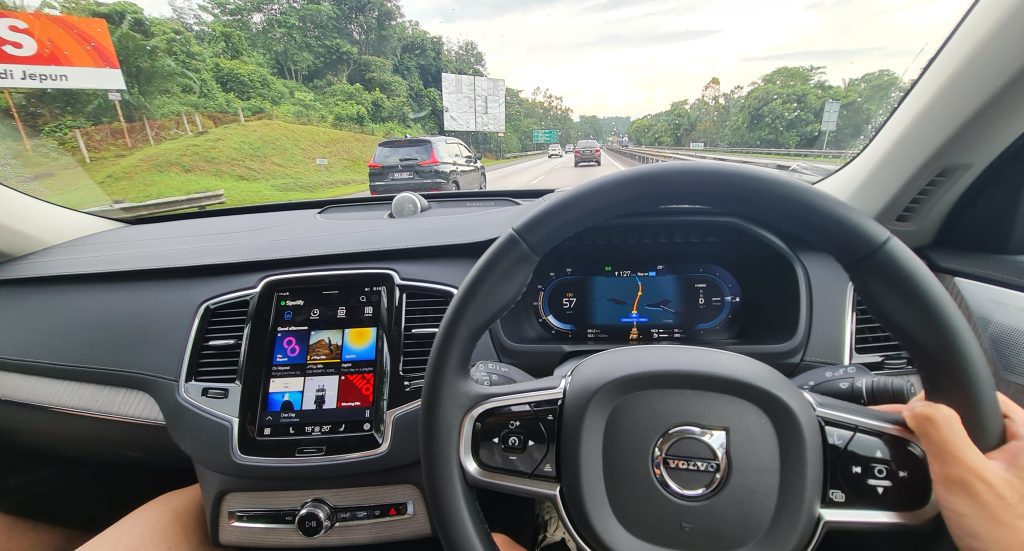
Naturally, its sheer size alone sees for there to be more than enough room on board for everyone (4 pax on this trip) to spread out within this behemoth of an SUV. Its gargantuan presence on the road also meant that any instance of fast lane cruising will see the road ahead be magically be devoid of cars as well, while any would-be tailgaters could be treated as nothing more than interesting curios in the rear view mirror.
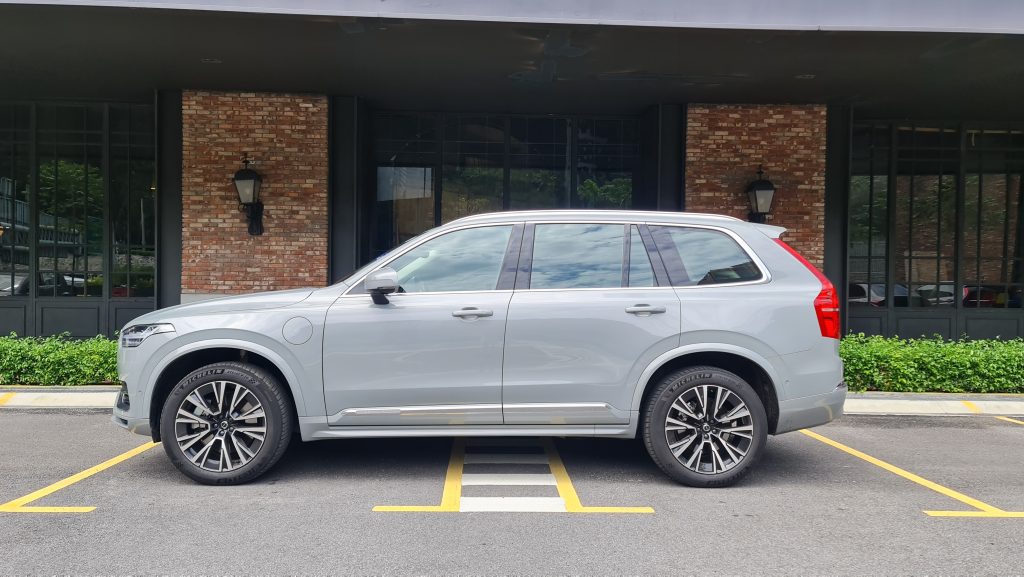
The Volvo’s quad zone climate control and some surprisingly roomy footwells underneath the front seats were to be particular points of praise raised by those sitting behind, while its rather competent Pilot Assist adaptive cruise control saw the driver take on a significantly less tiresome supervisory role to the task of actually driving instead. And while its standard air suspension was perhaps on the slightly firmer side of cloud-like wafting, it did nevertheless mean that this block of flats on wheels remained sure-footed and stable, even at speeds that strayed beyond the legal limit.
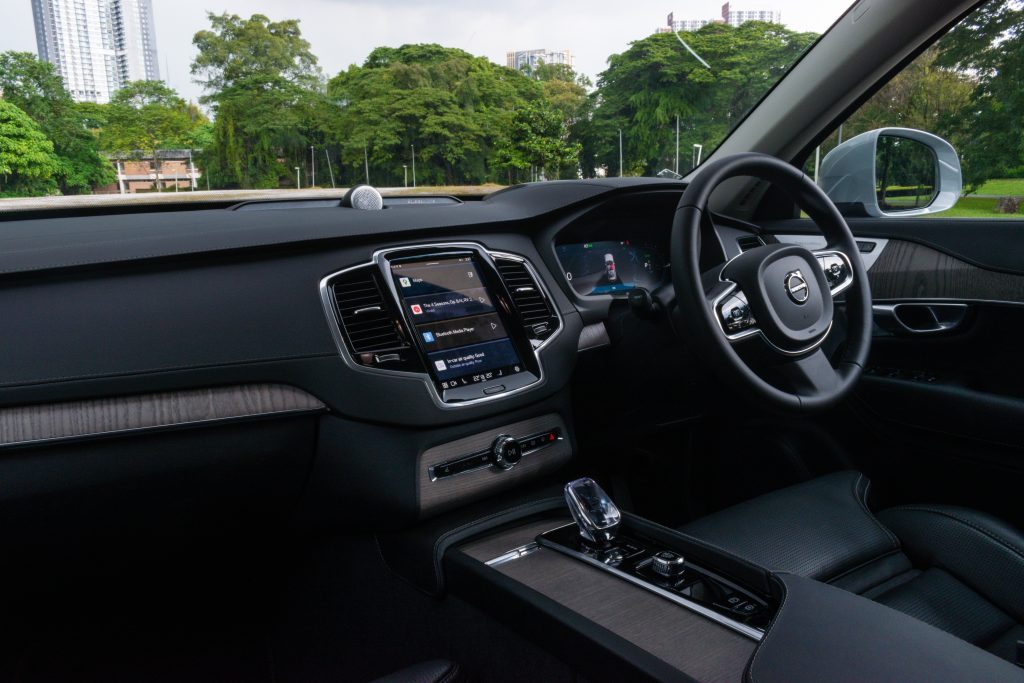
On the topic of speed though, the 2.0-litre turbocharged four-cylinder certainly had more than enough poke to heave this 2.3-tonne beast up to speed, but was perhaps more impressively able to do so without making all really any noise at all. There was expectedly little wind and road noise intruding into its cabin as well, which meant that the private concert conducted within — courtesy of the absolutely fantastic 19-speaker, 1,410 W Bowers & Wilkins high-fidelity audio system — could be carried out with minimal auditory distractions.
Just as a little side note here too, that aforementioned top-class sound system actually provided more than just stunning sounds during the drive, with it also generating some communal entertainment from an ongoing discussion that ensued on whether the selectable ‘Stage’, ’Concert Hall’ or ‘Jazz Club’ room modes sounded better for each song that came on throughout the road trip. The conclusion? ‘Concert Hall’ provided a more echo-y sound that was best suited to live recordings, while ‘Stage’ offers more crisp audio that was perfect for studio-recorded sounds.
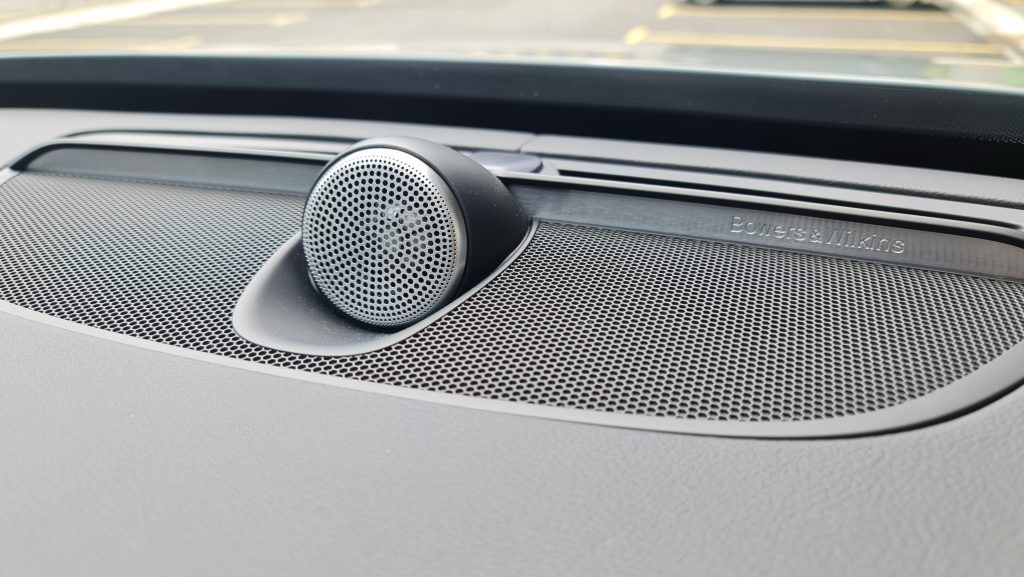
The All-Electric Town Driving Experience
Now in getting back to discussing the PHEV experience here, having the XC90 on Charge mode on the drive up returned about 50 km of battery range when eventually arriving into Ipoh after a 2-ish hour cruise from KL. It was at this point then upon reaching the first set of traffic lights in town that the driving mode was switched from Charge to PURE, in order to responsibly waft around town without anything being puffed out from its tailpipe.
And transitioning back to reviewing the car again now, there really is no better word to describe the in-town driving experience of the XC90 than waft. Such is not just because of this Volvo is extremely cushy to be in, but more so from the fact that it (unlike its other Germanic counterparts) has absolutely no pretence of sportiness whatsoever.
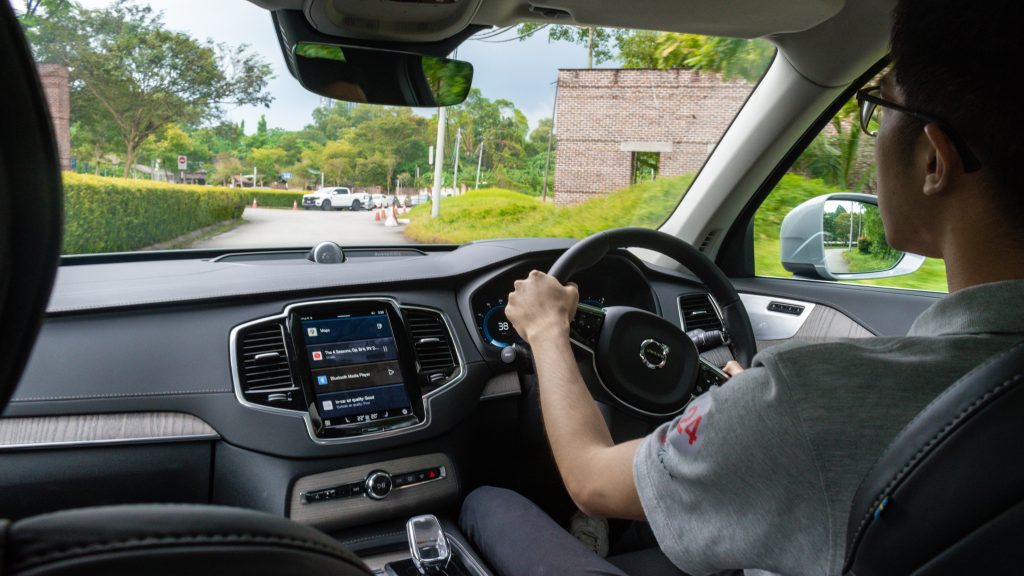
Among the things that are not to be found in this Volvo for instance are paddle shifters, nor too was there a dedicated Sport button to press anywhere within its serene cabin. The XC90’s steering weight and feel was also so light and vague respectively, that its steering wheel was really more suited for palming than gripping it with anger. Hence perhaps the reason why this writer discovered himself more often than not driving with a slouch, while this luxobarge meandered itself around Ipoh town centre.
Though while it has been established for this XC90 to not the be kind of car that warrants a heavy right foot, its instant EV torque (of which there is nearly 800 Nm of it) does still somehow see for this eco-conscious behemoth to pack more than enough power in allegedly giving a Mitsubishi EVO 8 a run for its money off the lights.
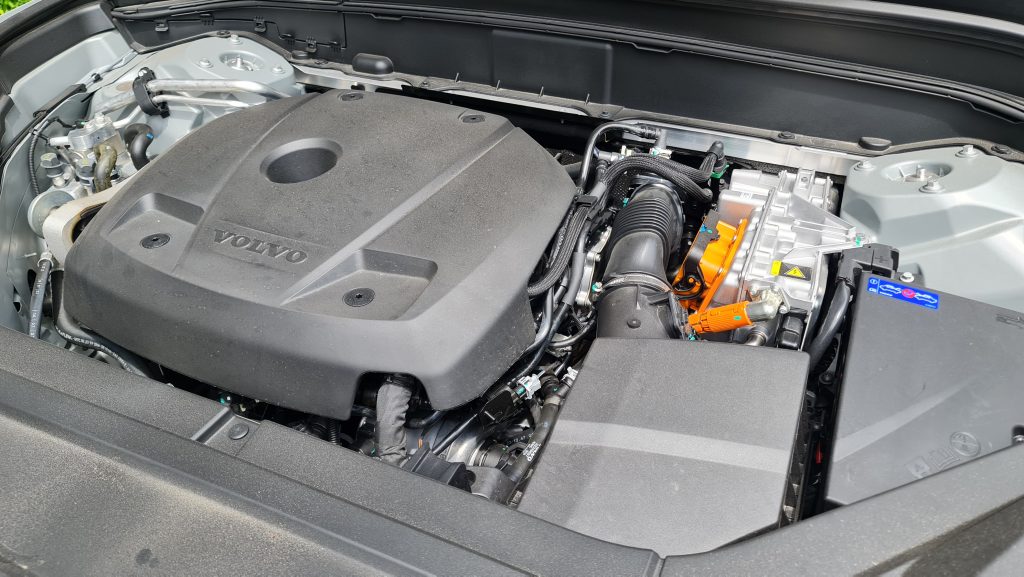
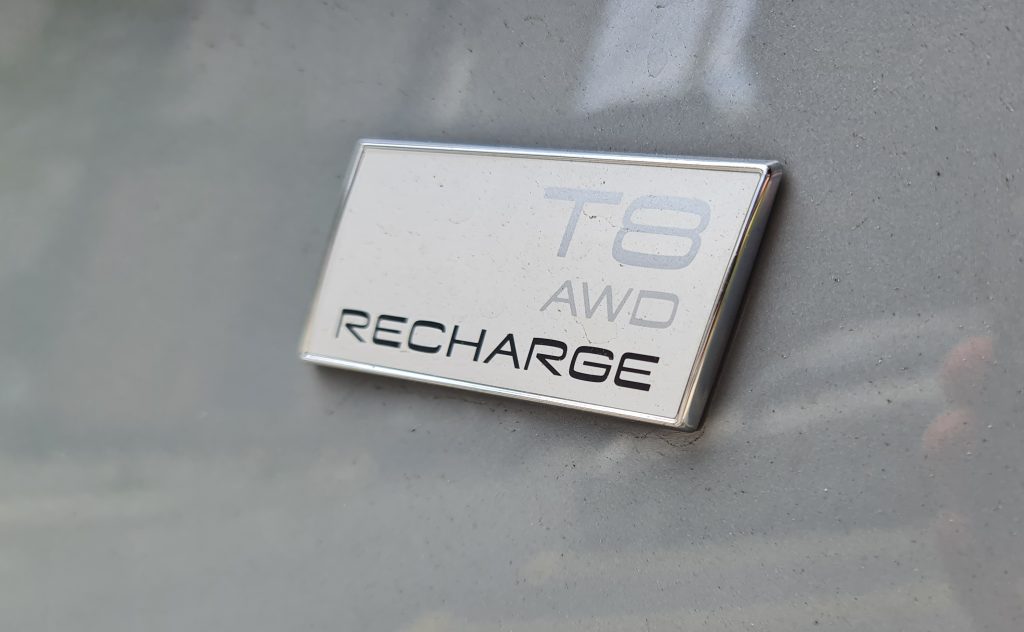
With it rolling on a set of Michelin Pilot Sport tyres from the factory too, this large Volvo can surprisingly still continue to wipe the smug look off the same EVO 8 driver (while also simultaneously impressing/frightening the XC90 passengers) through the bends as well. In fact, it is not a word of a lie to report that, while there was some degree of wallowing going on, this tower block nevertheless clung on through corners at speeds that no one would have believed this cushy SUV could have handled, and in the wet no less!
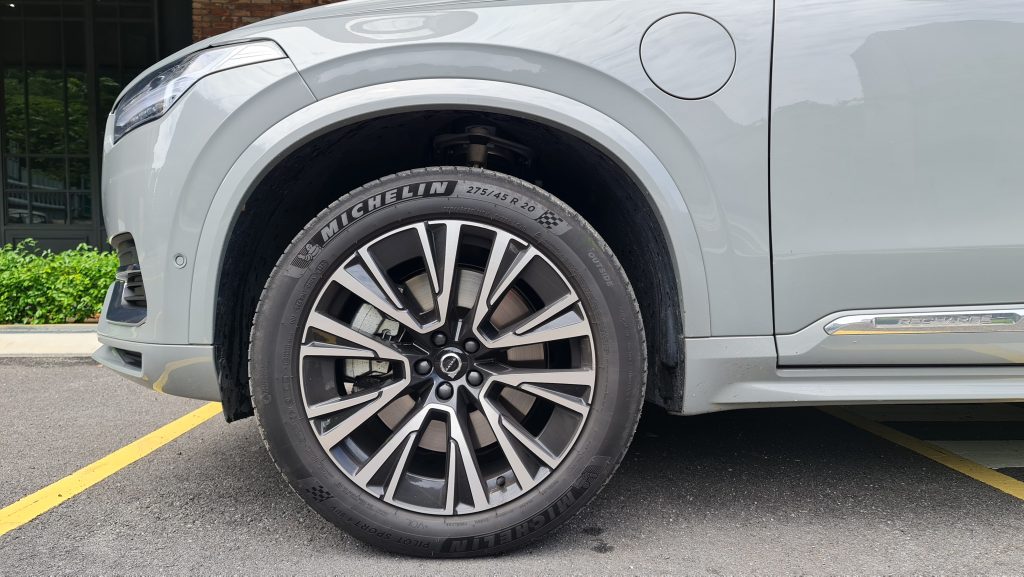
In The Pouring Rain
While conveniently on the topic of wet too, it should be mentioned here that the weather on the return journey was rather quite so. And this is pertinent to the story here because driving the Volvo back in the torrential downpour really highlighted the comforting qualities with this luxurious SUV.
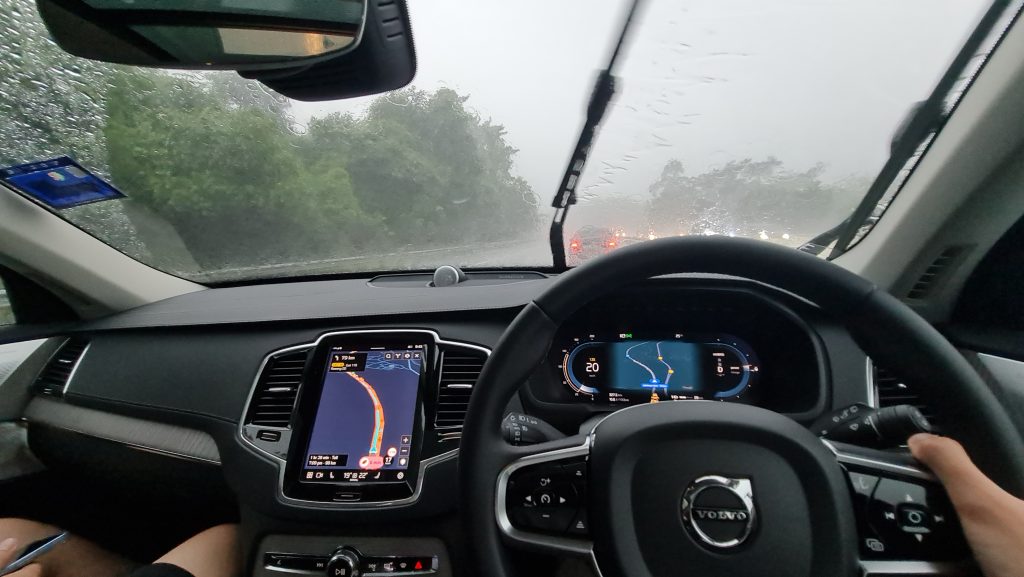
For one, even with the loudest of storms absolutely battering the outside of the XC90, only but a muffled drizzle was to be heard from within its muted cabin. Though perhaps more impressive than that was while there was scarcely any visibility stretching beyond a couple of feet in front of the Volvo in this particular wall of water falling from the sky, the only cause for concern when being behind the wheel during this time was that the music was slightly too soft now…
This total lack of concern was in large part to be due to the aforementioned Pilot Assist adaptive cruise control being an absolute life saver during the downpour, where its various radars and sensors did an absolutely incredible job at keeping pace with the car ahead, at a time where the human behind the wheel could barely make out its brake lights. That said, Volvo’s sterling reputation for safety and security certainly did certainly also play a small part in allaying any lingering paranoia about the survivability of a potential crash, from driving on a highway that has since turned into a shallow lake.
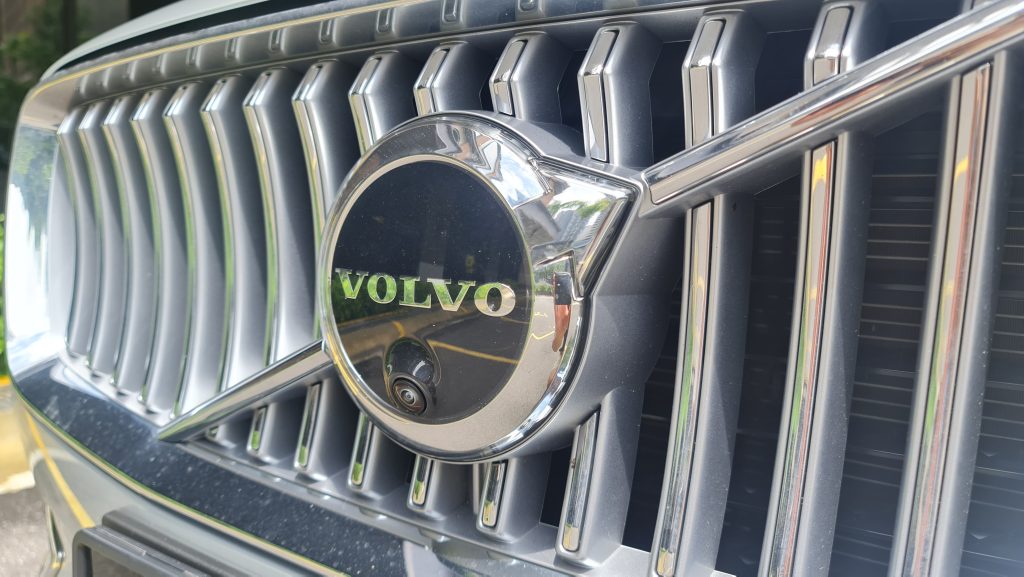
Just an aside here too, but this particular Volvo tested incidentally featured one of the best wipers ever experienced in a test car. A strong wipe was afforded on both the front and back windows, with all the glass not then leaving a film of blurry rain that is typically expected on the cars that this writer has previously tested.
Now as for matters on a purely PHEV perspective meanwhile, in spite of having covered over 300 km getting to and going around Ipoh, the Volvo still had more than half of its fuel left in its tank for the trek back to KL. This therefore meant that unlike in most EVs where a top up of its batteries would have been required to comfortably make the remaining sub-150 km trip south, the XC90 mercifully spared us the hassle to needing to deal with the rain-soaked (and packed) rest stops, as well as the typically roof-less charging stations on the return journey.
Though in terms of spared hassles here, the biggest of which that was offered by the PHEV powertrain over a pure EV was for it to have saved us a bunch of time on the road. And it is really worth highlighting here that this time saved does not just come from the 45 or so minutes that would have been required to top up an EVs batteries, but more so because needing to make a charging stop at that time likely would have pushed the eventual ETA into KL right smack in the dinner time rush hour traffic…
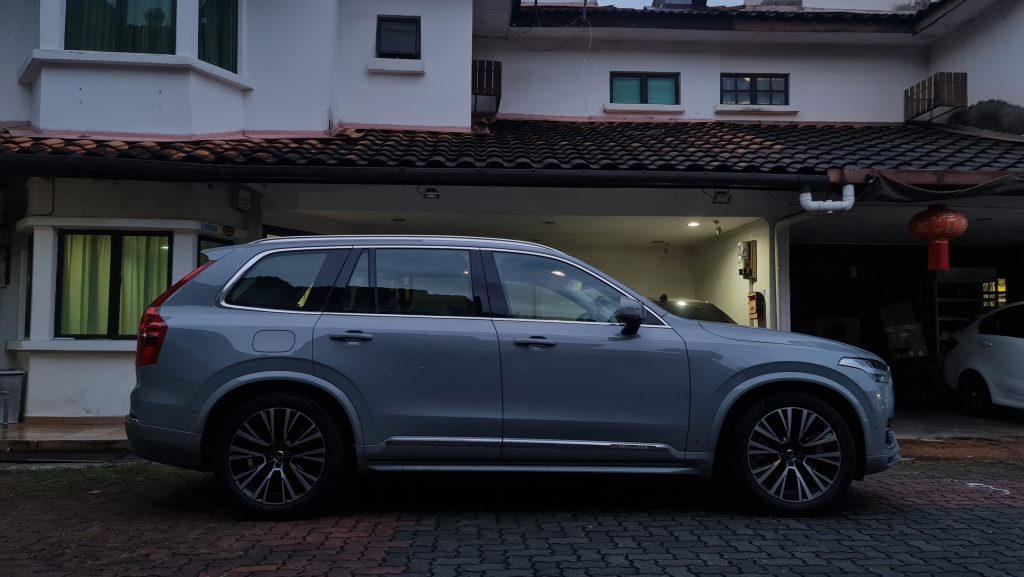
At The End Of The Day
If the trip computer is to be believed, this Volvo managed to return a decent-enough 10.6 km/l fuel consumption figure from the 420.6 km interstate journey, which involved a mixture of town and highway driving (of both the slow and high speed variety). This was with a flat battery but a full tank of fuel upon departure, while returning with a battery that is three-quarters charged and about a third of a tank of fuel left.
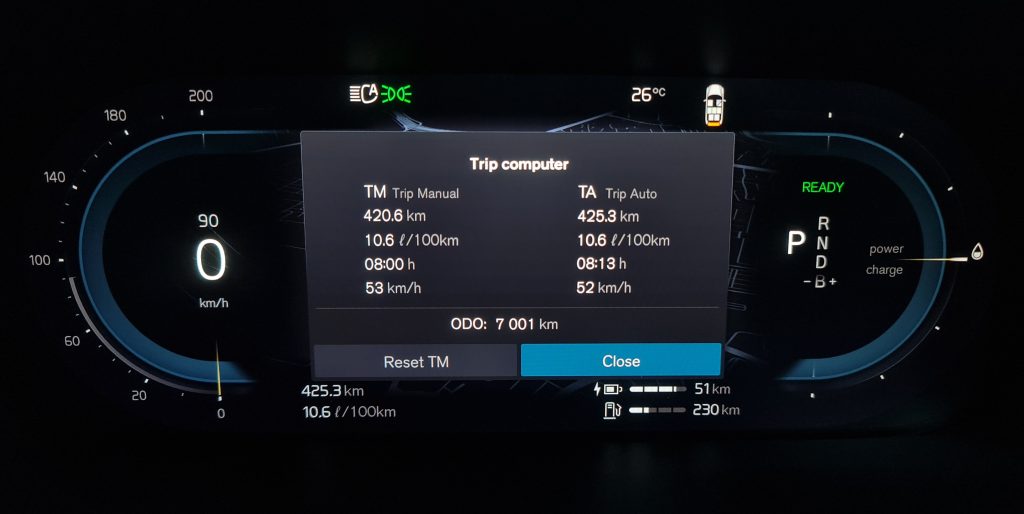
Now crunching those numbers sees for this whole journey to cost about RM 81 (420.6 km / 10.6 km/l x RM 2.05) using RON 95, which is not exactly cheap, but in pre-empting the EVangelicals that will inevitably argue that this journey would have be cheaper with an EV here, it is prudent to point out that charging using the DC fast chargers on the interstate isn’t exactly cheap to begin with either.
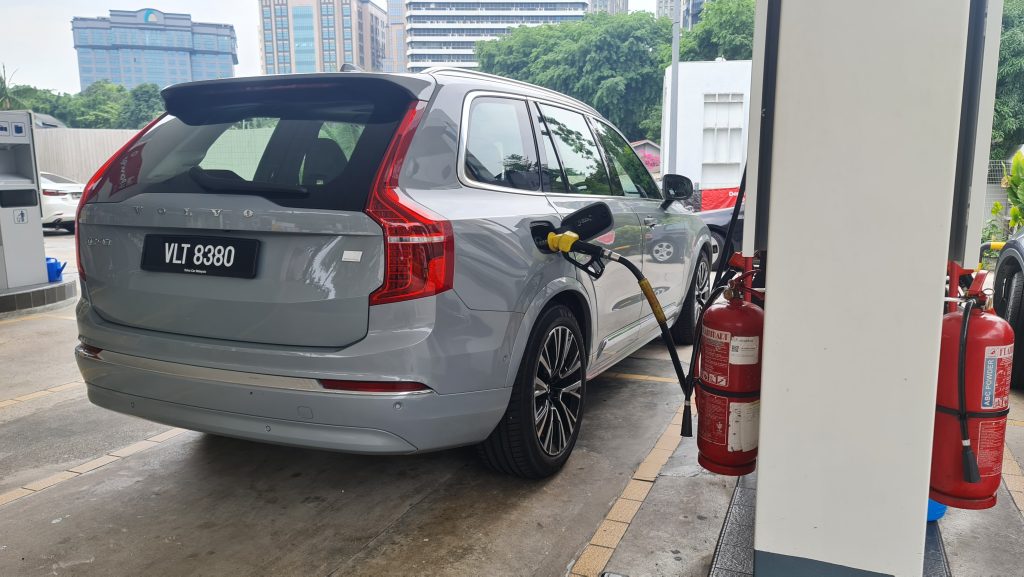
More importantly too perhaps is the point that this whole round trip to Ipoh was completed without needing to detour once to cater to the car’s needs, nor was there ever once throughout the journey that any thought was paid to practicing efficient driving practices to maximise range. The air-conditioning on full blast when the occupants demanded it (which was nearly every instance in the sweltering hot Ipoh), and the car was going at the speed the driver wishes to travel at (which on the highway at least meant a consistent triple digits where possible).
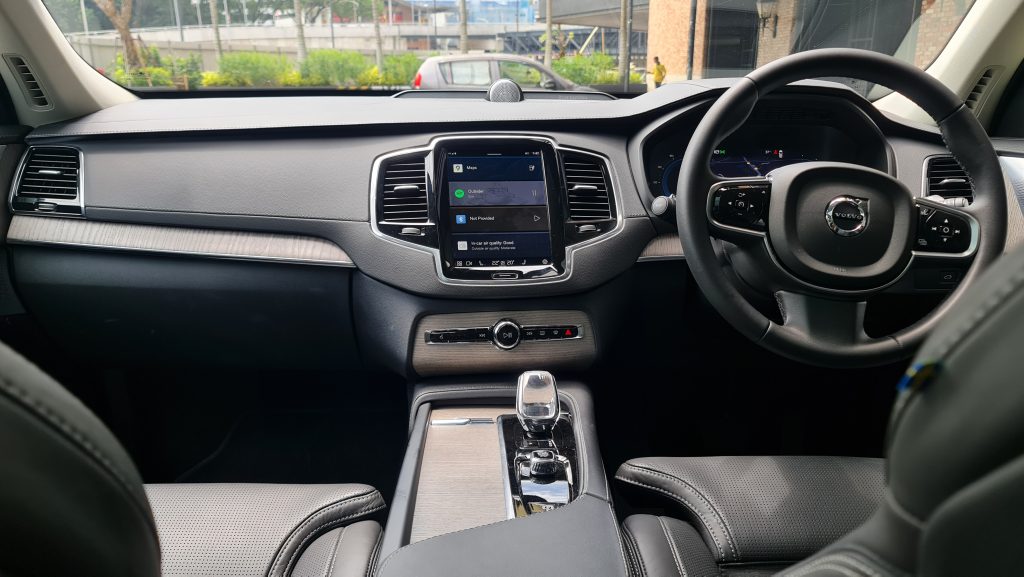
Turning to providing a verdict on the Volvo as a car on the other hand here, this writer got out the other end of what was a cumulative 8 hours spent in the XC90 that day without any back ache to speak of. Nor was the writer even the least bit tried from driving in fact, thanks to the adaptive cruise control having done most of the driving on the highway.
There is nevertheless the elephant in the room that needs to be addressed with this XC90, and that is the fact it is a nearly decade-old model at this point already. But perhaps as a testament to how much of a leap forward this Volvo is when it came out, there was really no real indication anywhere on this SUV that really showed for it to have initially came out all the way back 2015…
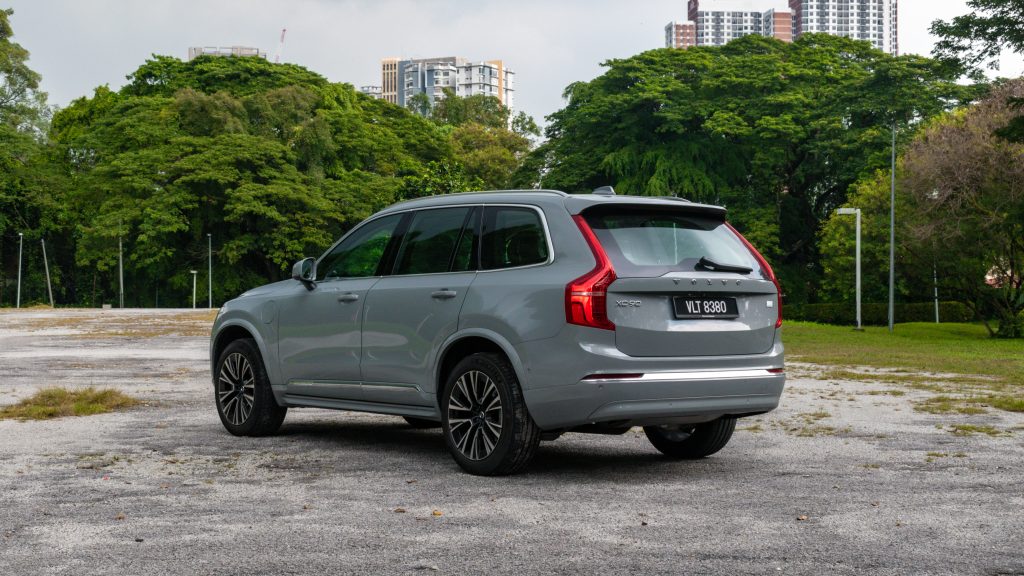
Odds & Ends
- The Volvos are one of the few cars where the wireless charger actually charges the phone, as the Swedish marque utilises an Android Automotive infotainment system that does not enable Android Auto integration. This good points and bad points with this setup was previously summarised in a review for the C40, linked here.
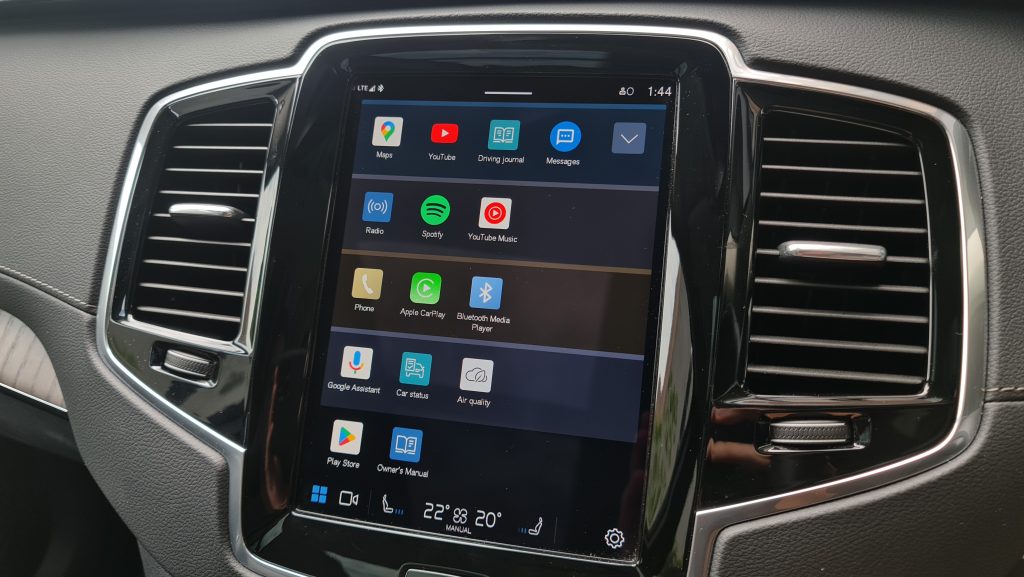
- In spite of Volvo’s commitment to driving safety, the infotainment system on the XC90 is one of the few systems that allow typing while driving.
- There is unfortunately no Waze support on the Volvo’s digital drivers display, only Google Maps. This therefore means that the incredibly useful map view on the digital driver’s display is not available while using Waze, with it only showing arrow directions instead.
- Putting the XC90 in Park strangely doesn’t automatically engage the electronic handbrake, like in nearly all other cars. Some rocking hence ensues when stationary, which kind of serves as a physical reminder to then activate the parking brake.
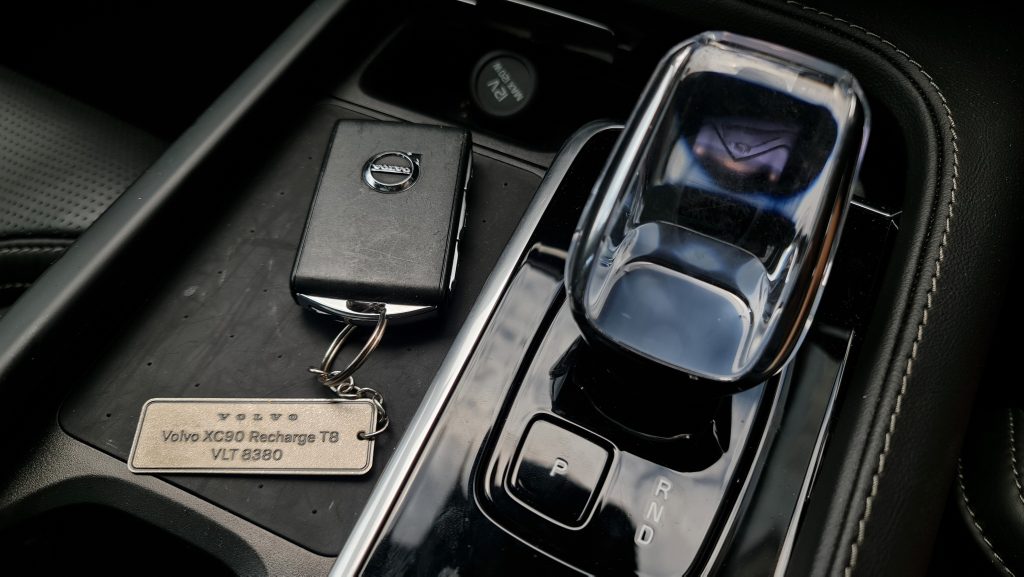
- While the XC90 has a 360º camera, its fish-eyed wide angle view sees for it to therefore be limited in its usefulness when actually in situations when this feature would really be useful.
- The air conditioning takes a little bit of time to kick in after initially starting the car, with this little bit of time feeling like an eternity when coming in from the blazing Ipoh sun. Pre-conditioning is nevertheless available on the Volvo app, for those who bother to configure anyway.
- The XC90 has the typical Volvo grocery divider flip-up flap in its boot, with the rather handy elasticated loop to better secure items from rolling all over the place behind.
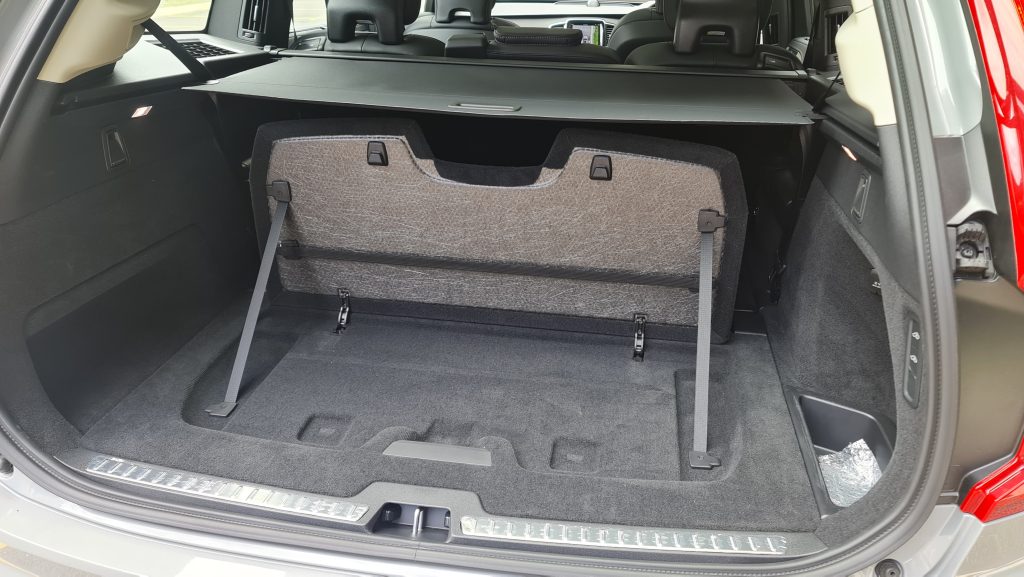
- The door open icon on the digital instrument cluster shows exactly which door on the Volvo is open, which negates the need for everyone to check who exactly forgot to close their door properly.
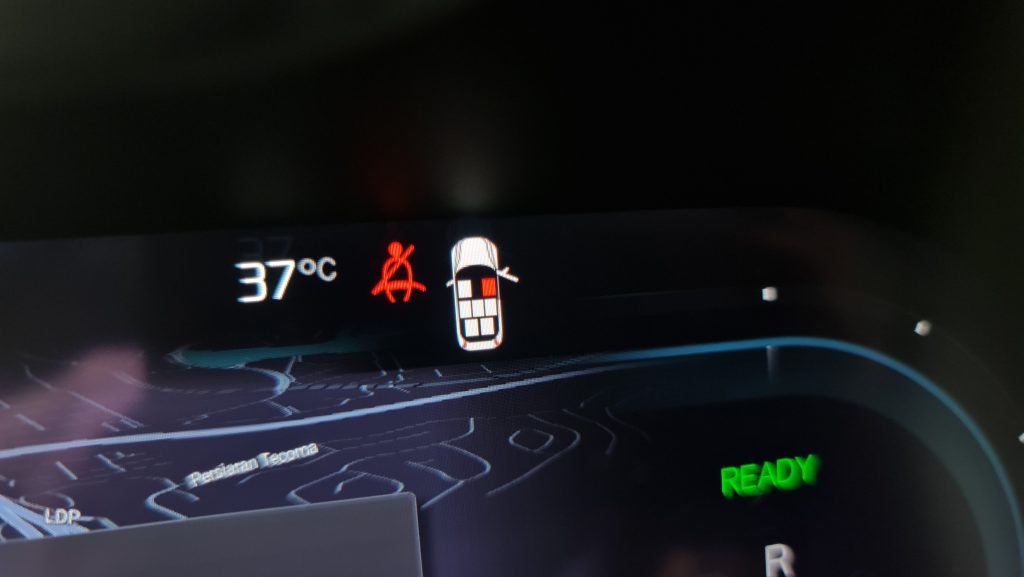
- This being a car from a generation ago, the XC90 mercifully still retains physical clicky buttons on its steering wheel.
- The speed setting on the Volvo’s cruise control sees for a short press to be increments of 5, while a longer continued press sees for the change to then be in increments of 1.
Volvo XC90 Recharge T8 Ultimate Technical Specifications
Engine: Inline-4, 16-Valve, DOHC, Turbocharged petrol PHEV
Engine Capacity: 1,969 cc
Gearbox: 8-speed Automatic
Max Engine Power: 462 hp
Max Engine Torque: 709 Nm
Top Speed: 180 km/h
0-100 km/h: 5.3 seconds
Price: RM 434,888
